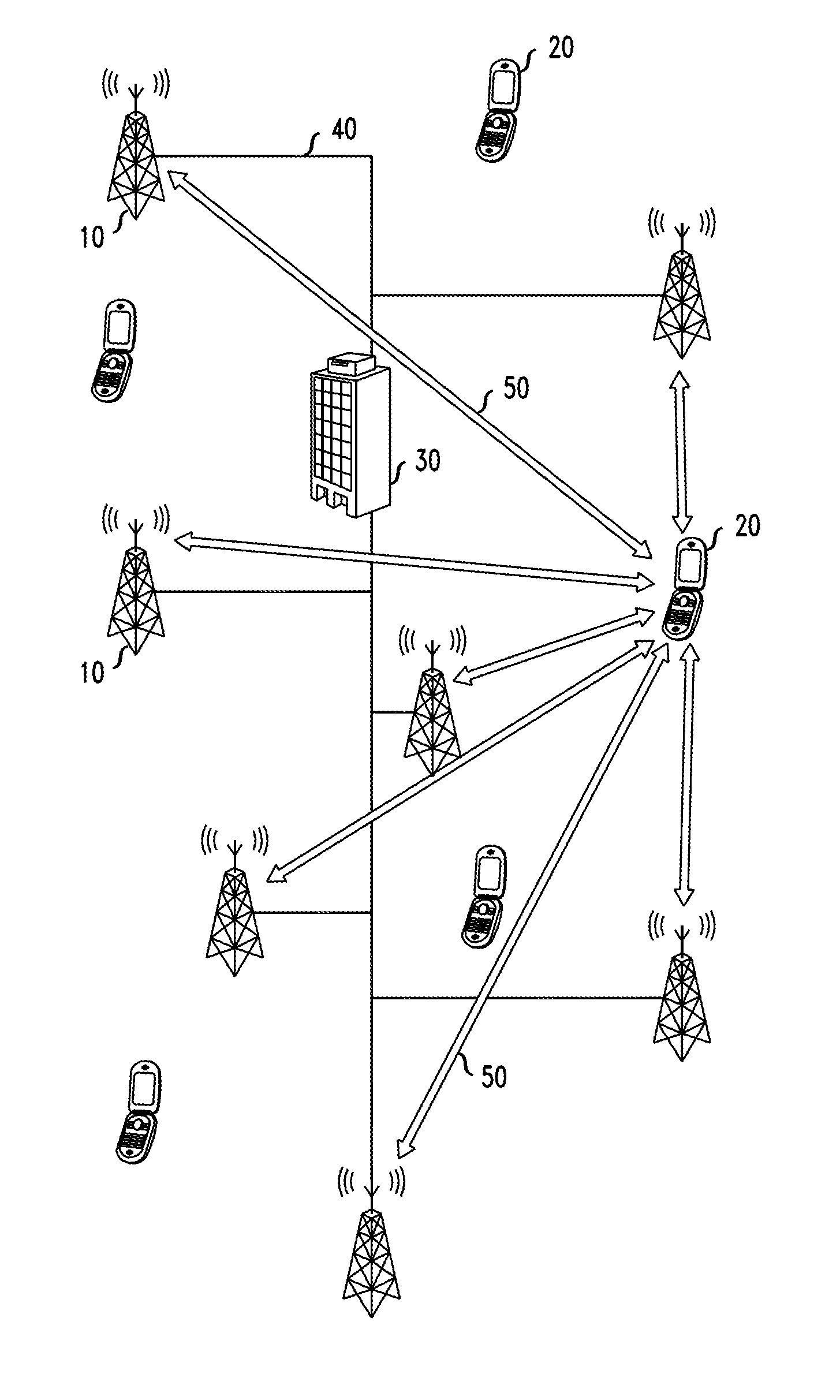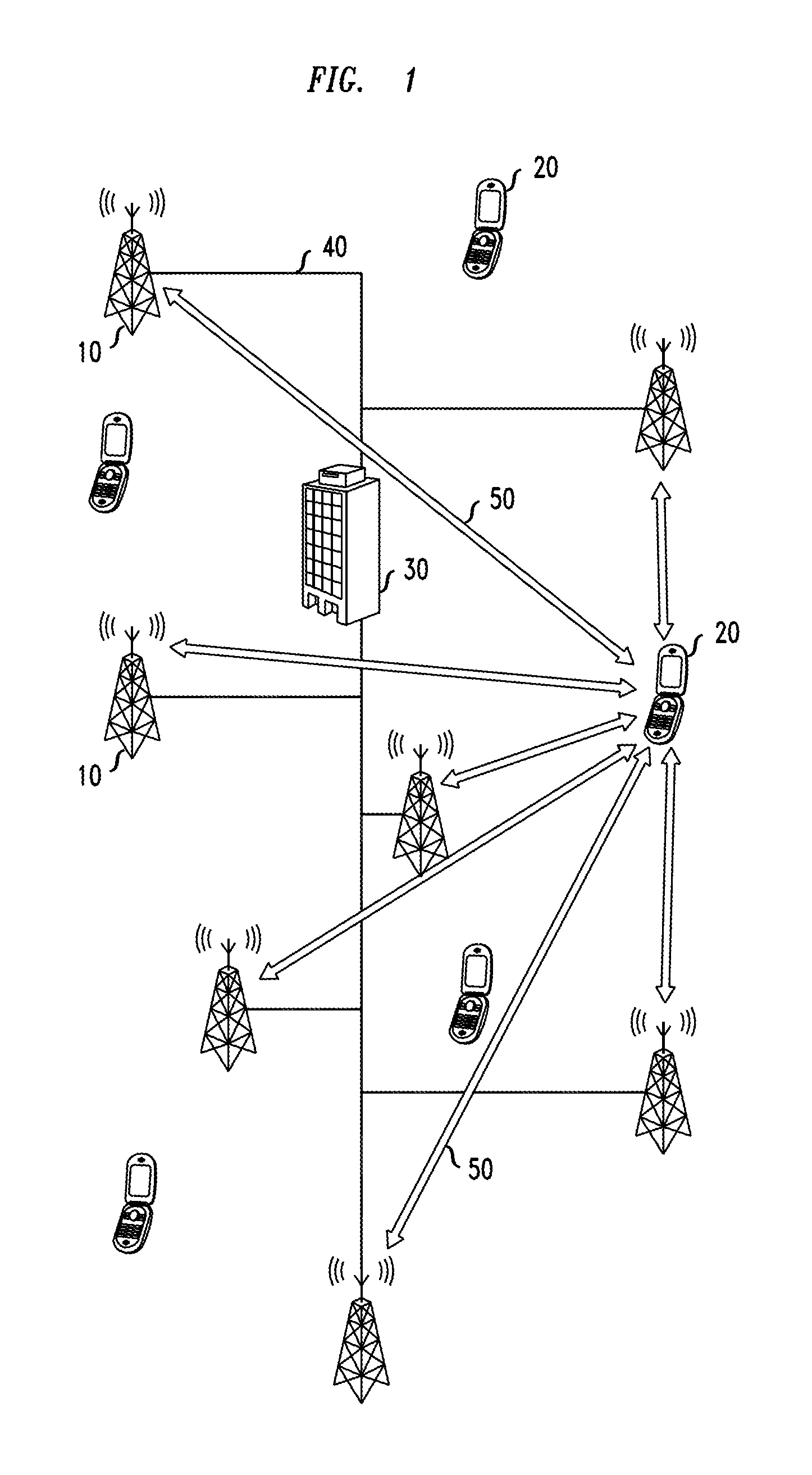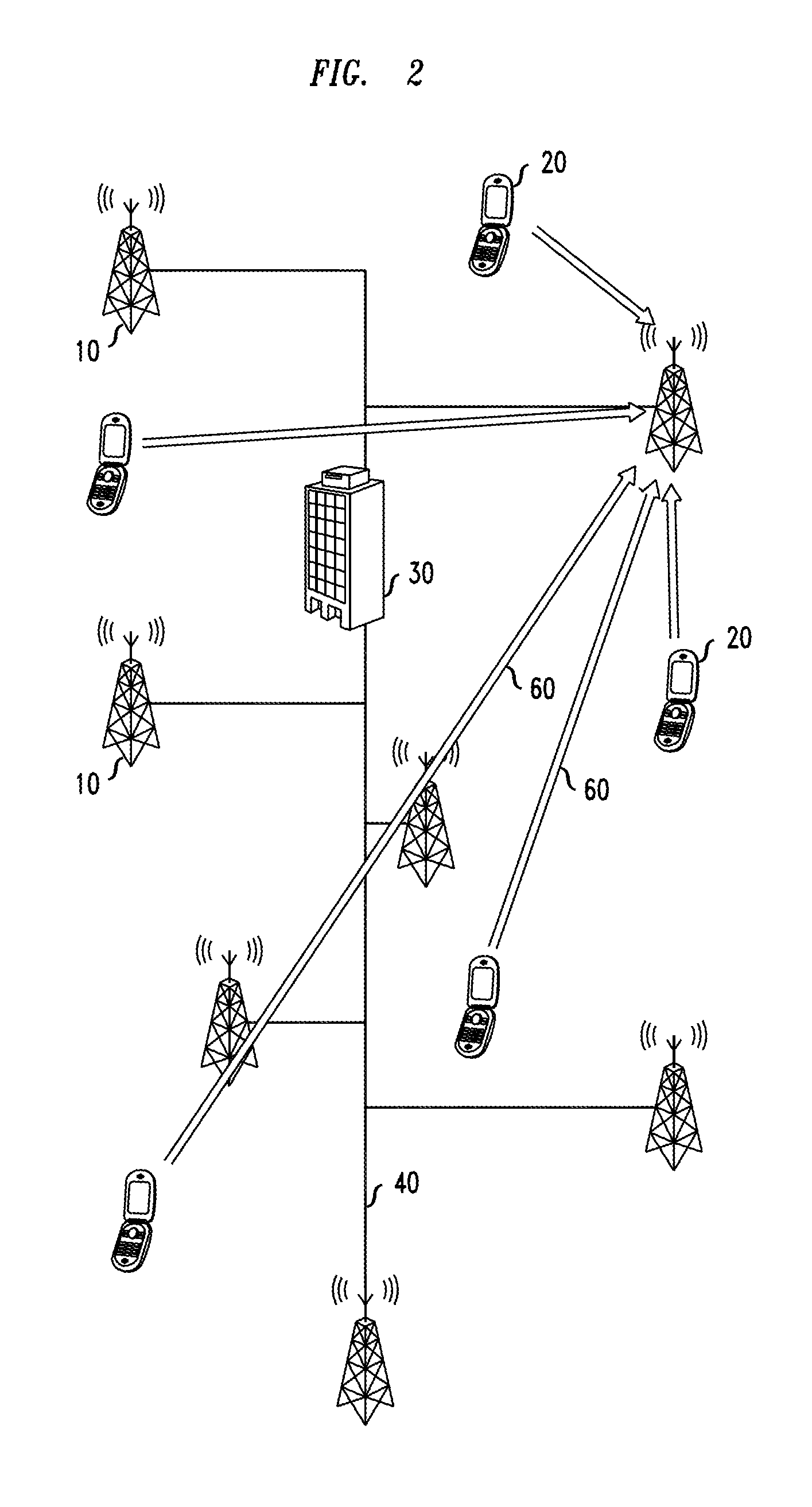System And Method Of Wireless Communication Using Large-Scale Antenna Networks
a large-scale antenna network and wireless communication technology, applied in the field of wireless communication methods and systems, can solve the problems of difficult to achieve large-scale, geographically extensive lsas, and still practice difficulties
- Summary
- Abstract
- Description
- Claims
- Application Information
AI Technical Summary
Benefits of technology
Problems solved by technology
Method used
Image
Examples
Embodiment Construction
[0015]Turning to FIG. 1, a population of service antennas 10 serves a population of ATs 20. The service antennas are connected to each other, and to a hub node 30, over a backhaul network 40. Although the backhaul network will typically be a fixed, landline network such as a fiber optic network, other implementations are possible and should not be excluded. For example, the backhaul network may be a wireless network. Indeed, in some implementations a designated subpopulation of the ATs may assume the role of the service antennas. Typically, the ATs would have capacity reserved for performing in such a dual role. ATs that can perform such dual roles may be of particular value for ad hoc networks, if such networks are organized according to the principles to be described here.
[0016]Although each service antenna is shown, and will be discussed below, as though it comprises a single antenna element, other implementations are possible in which some or all of the service antennas are mult...
PUM
 Login to View More
Login to View More Abstract
Description
Claims
Application Information
 Login to View More
Login to View More - R&D
- Intellectual Property
- Life Sciences
- Materials
- Tech Scout
- Unparalleled Data Quality
- Higher Quality Content
- 60% Fewer Hallucinations
Browse by: Latest US Patents, China's latest patents, Technical Efficacy Thesaurus, Application Domain, Technology Topic, Popular Technical Reports.
© 2025 PatSnap. All rights reserved.Legal|Privacy policy|Modern Slavery Act Transparency Statement|Sitemap|About US| Contact US: help@patsnap.com



